A fridge compressor as a vacuum pump
A friend of mine gave me this refrigerator compressor:
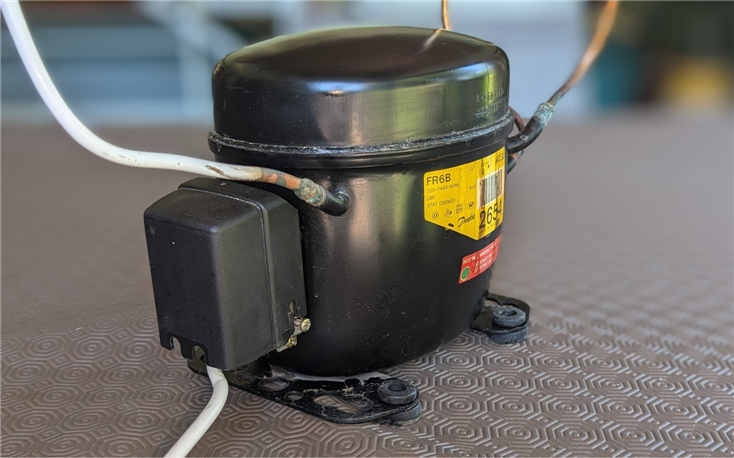
I removed the lid and found a so called "starter relay".
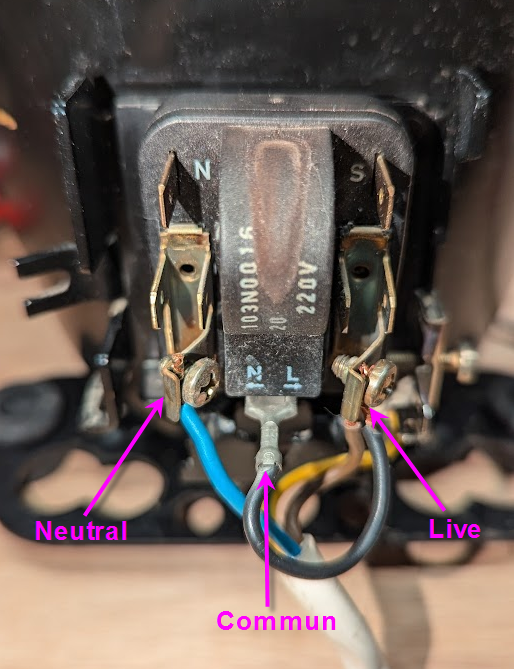
So I just had to apply MAINS voltage:
- Neutral on N pin
- Live on L pin and C pin
Then I tested it and the motor worked producing a strong vacuum.
My very first finding was that a fridge compressor has a very weak air flow. Its CPM (Cubic Feet per Minute) is very low. But who cares for my application ? I just want to empty a vacuum bag then keep the pressure down. So it should work.
Vacuum produced is strong and even very strong. After searching on the internet I found that this kind of device would deliver -27 inch of mercury...

What is -27 inch of mercury into units understandable in european union ?
Well it's almost 1kg/cm^2

This means that every cm^2 of my foam wings will receive a 1kg load.... If my wing was 1m^2 it would receive 10000 kg on each side. For sure the foam would crash.
As a consequence:
- vacuum produced by the fridge compressor is more than enough for vacuum bagging applications
- a regulation system must be used to avoid too much pressure on the foam
This regulation system will take care to start and stop the compressor when pressure is too high or too low.
So we will try to start/stop the compressor...
Starting/stopping a fridge compressor
A fridge compressor is composed of a motor equiped with two coils.
- a "run" coil which must be powered to run
- a "start" coil which must also be powered but only to start the motor during less than 2s
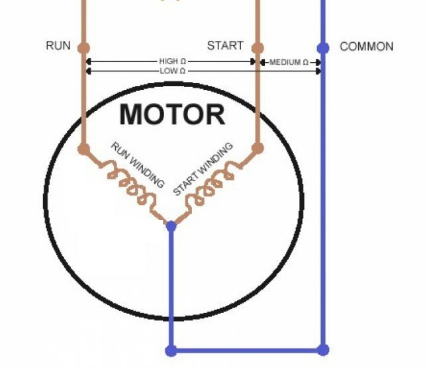
Note that, to know which coil is the run and wich is the start, you have to measure the resistances with an ohmmeter as indicated on the above picture.
To apply the short pulse on the start coil a "starter relay" is used.
The "starter relay" of my fridge is labelled 103N0016 and was produced by Danfos. I found the datasheet which showed that this relay is not a relay but a more tricky device.
Here is its schematics

Obviously this device does the job as the motor starts... but I very soon discovered that if I start then stop the motor it would not start again. And this is critical as the run winding is powered but the motor is "blocked".
To understand why this is occuring we have to look carefully at the inner components of the "starter". You can see that a PTC thermistor is shunting the run and start coils.
PTC thermistors are temperature-dependent resistors based on special semiconductor ceramics with a high positive temperature coefficient (PTC). They exhibit relatively low resistance values at room temperature. When a current flows through a PTC the heat generated raises the temperature of the PTC. Once a certain temperature (Curie temperature) is exceeded, the resistance of a PTC rises significantly.
So that, when starting at room temperature, the thermistor is more or less a "shunt" passing the full power to the start coil thus starting the motor. Immediately after the temperature rizes and the resistance value also limiting the current into the start coil and virtually disconnecting it (which is expected)
But, if I stop and restart the motor, the thermistor is still (very) hot, its resistance is high, the start coil is "disconnected" and the motor does not start leaving it in an unsafe condition (run coil powered but motor stopped).
To avoid this behavior we have two solutions:
- use the starter but wait 30s to recover room temperature if you want to restart it
- do not use the starter and replace it by two independant relays. One for the run coil the other for the start coil
My electronic board will be equiped of two relays to allow implementation of these two solutions !
Electronic board to automate the vacuum pump
Schematics
Schematics of this board couldn't be more simple.
- An ESP32 microcontroller will handle all the logic and communication with smartphone over Bluetooth Low Energy
- two relay...
 JP Gleyzes
JP Gleyzes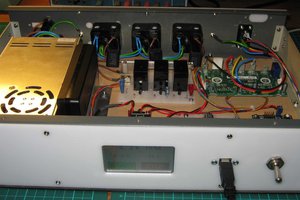
 Mark Atherton
Mark Atherton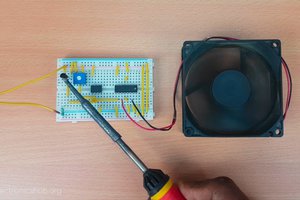
 kamalkedin123
kamalkedin123
 Lucy Fauth
Lucy Fauth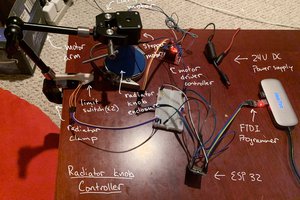
 Eugene Choe
Eugene Choe